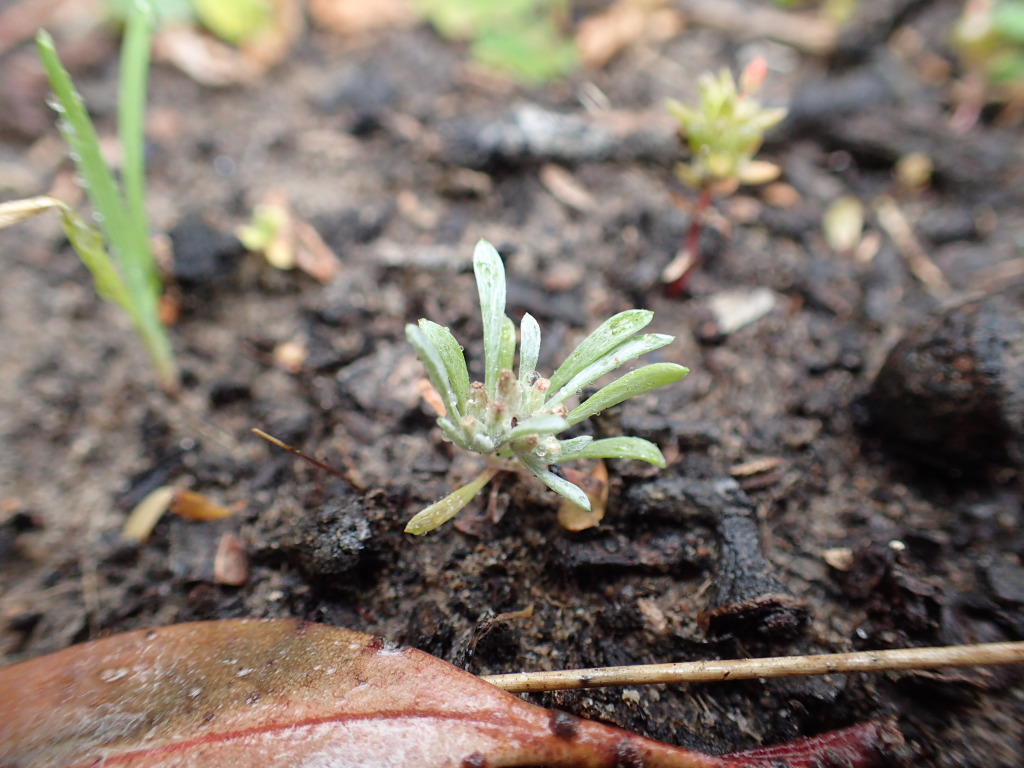Gnaphalium
Non-stoloniferous, annual or perennial herbs with eglandular cottony hairs. Leaves alternate, sessile or pseudopetiolate, entire. Capitula c. campanulate, aggregated into a terminal cluster, sometimes subtended by a whorl of leaves. Involucral bracts in 2–4 series, more or less equal in length, the outer part papery, translucent or hyaline, often brownish. Florets all tubular; outer florets filiform, female, corolla 3- or 4-lobed; inner florets bisexual, fewer than female florets, corolla purple or yellow, 5-lobed, anthers shortly tailed, style branches linear, apices truncate. Cypselas flattened-ellipsoid, with microscopic imbricate papillae and sparse, short, clavate hairs; pappus hairs barbellate, sometimes shortly ciliate at base, those of the bisexual florets slightly dilated at apex, not united at base and falling singly or in small groups.
About 80 species, cosmopolitan; 3 species in Australia.
Some treatments include segregate genera (e.g. in Australia, Euchiton, Gamochaeta and Laphangium) within Gnaphalium.
Walsh, N.G. (1999). Gnaphalium. In: Walsh, N.G.; Entwisle, T.J., Flora of Victoria Vol. 4, Cornaceae to Asteraceae, pp. 826–827. Inkata Press, Melbourne.
 Spinning
Spinning


